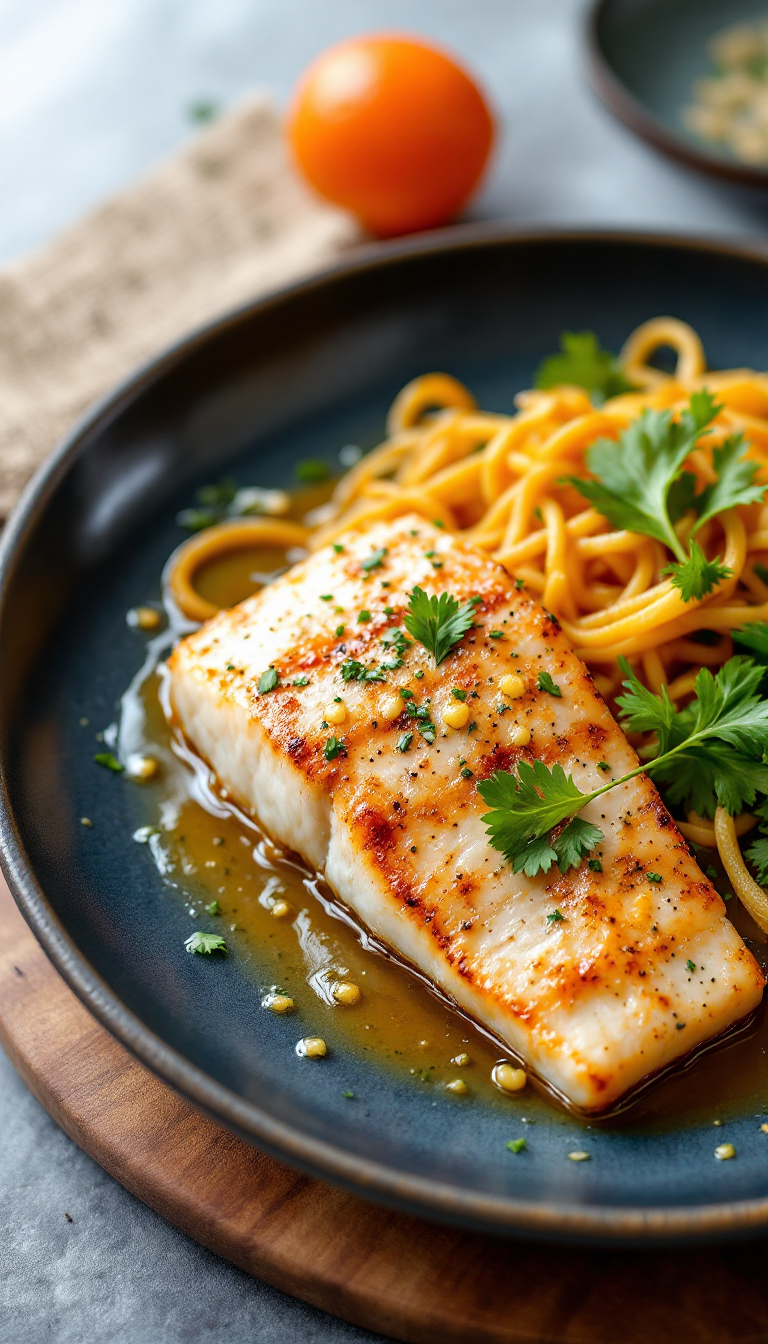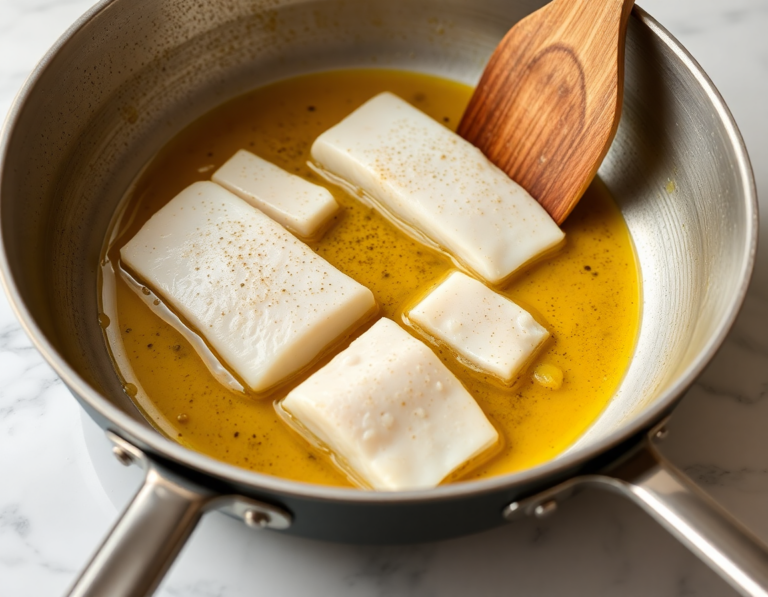
There’s something almost magical about bringing the taste of the ocean to your table with a dish like swordfish. It’s like the culinary equivalent of a seaside vacation—whether you’re a seafood aficionado or just dabbling, this easy and delicious swordfish recipe is a must-try. Picture a tender, flavorful filet, seared to perfection, offering a delightful escape from the everyday.
Steps
- Preheat your oven to 400°F, ensuring the rack is positioned in the middle. In a small pan, mix together the ingredients for the lemon-garlic mixture and set it aside.
- Use paper towels to remove any excess moisture from the swordfish fillets. Season both sides of the fillets with kosher salt and freshly ground black pepper.
- Heat olive oil in a large, oven-proof pan over medium-high heat. Once the oil is hot, place the swordfish fillets in the pan, cooking them for about 3 minutes on one side until browned.
- Carefully flip the fillets to the other side, turn off the stove, and immediately move the pan into the preheated oven. Roast the fish for 5-6 minutes, ensuring the top is golden and the center is just cooked through.
- Just before the fish is finished in the oven, heat the lemon-garlic mixture over medium-high heat, stirring until it’s melted and bubbly. Pour this mixture over the cooked swordfish, ensuring to include any juices from the pan.

Ingredients
- 2 tablespoons olive oil
- 2 swordfish fillets, each 1-inch thick (approximately 6-7 oz each)
- Kosher salt, to taste
- Freshly ground black pepper, to taste
Nutritional Values
Calories: 482kcal | Carbohydrates: 4g | Protein: 34g | Fat: 37g | Saturated Fat: 12g | Trans Fat: 0.6g | Cholesterol: 142.8mg | Sodium: 1392.8mg | Fiber: 0.6g | Sugar: 0.8g
FAQ
- How thick should the swordfish fillets be for this recipe?
- For the best results, aim for swordfish fillets that are at least 1-inch thick. This ensures they cook evenly and retain their tenderness.
- What is the cooking method used for the Lemon Garlic Swordfish?
- The swordfish is first pan-seared on one side in a large oven-proof pan and then finished in a preheated oven. This method enhances the flavors and ensures a perfectly cooked fish.
- Why is it important to towel-dry the swordfish fillets before cooking?
- Towel-drying the fillets removes excess moisture, which helps achieve a nice brown crust when searing and prevents the fish from steaming instead of roasting.
- How can I prevent overcooking the swordfish?
- Keep a close eye on the cooking time and aim to have the fish just cooked through. Overcooking can lead to a loss of the fish’s tender texture.
- What makes the Lemon Garlic mixture so special for this dish?
- The butter-garlic-lemon combination provides a rich, vibrant flavor that complements the natural taste of swordfish, turning a simple dish into a gourmet experience.
Tips
- Ensure your swordfish fillets are at least 1-inch thick to maintain tenderness and prevent overcooking.
- Thoroughly pat the fish dry with paper towels before seasoning to remove excess moisture, which helps achieve a better sear.
- Avoid overcooking by following the timing closely; the fish should be just cooked through to preserve its tender texture.
- Prepare the lemon-garlic butter mixture in advance and pour it over the fish immediately after cooking to enhance flavor.
Equipment
- Large Oven-Proof Pan: Essential for pan-roasting the swordfish and transferring it directly into the oven.
- Small Pan: Needed for preparing the lemon-garlic mixture.
- Paper Towels: Useful for pat-drying the swordfish fillets. While they are common, some people might choose to buy in bulk online.
- Meat Thermometer: Optional, but useful to ensure the fish is just cooked through and not overcooked.